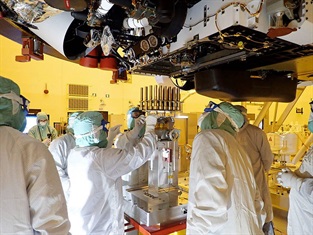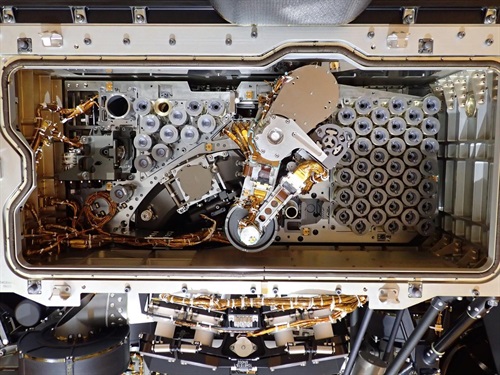Mars Perseverance Rover Set to Land on the Red Planet Feb. 18

Credit: NASA/Jet Propulsion Laboratory Cal Tech. In this image taken on May 20, 2020, at the Kennedy Space Center, engineers and technicians insert 39 sample tubes into the rover’s belly.
The Mars 2020 mission, including the Perseverance Rover and Ingenuity Helicopter, will land on Mars on February 18, 2021. A first on a Mars mission, the Sample Caching System included on Perseverance will collect and store short cores of Martian rocks and soils destined for future return to Earth and study with advanced instrumentation. The system is complex, including a drill for sample collection and tubes to seal and store the collected samples until a future mission can retrieve them.
Planetary Protection is focused on limiting biological contamination of other worlds with terrestrial organisms, meaning life from Earth, and preventing the return of harmful extraterrestrial organisms, if life is present on Mars, when samples are returned to Earth during robotic sample return. Planetary Protection implementation on the Mars 2020 Perseverance Rover Sample Caching System is of great importance to the mission.

Inside the Payload Hazardous Servicing Facility at NASA Kennedy Space Center in Florida, the Sample Caching System Sterile Flight Model hardware was installed on the Mars Perseverance rover on May 21, 2020. The system includes 39 sample tubes. Each tube is sheathed in a gold-colored cylindrical enclosure to protect it from contamination. The Perseverance rover will carry 43 sample tubes in total to Mars' Jezero Crater. The Mars Perseverance rover launched in mid-July atop a United Launch Alliance Atlas V 541 rocket from Pad 41 at nearby Cape Canaveral Air Force Station. The rover is part of NASA’s Mars Exploration Program, a long-term effort of robotic exploration of the red planet. The rover will search for habitable conditions in the ancient past and signs of past microbial life on Mars. The Launch Services Program at Kennedy is responsible for launch management.
“Part of what we're doing with the tubes and the drill is we're not just worrying about what we take to Mars, that's forward contamination,” said Lisa Pratt, NASA Planetary Protection Officer, during the Gravity Assist Podcast, “Perseverance Rover: How We Protect Mars from Earthly Germs,” July 24, 2020. “We're very concerned about what might come back in those samples, that's backward Planetary Protection. Backward Planetary Protection ensures that we do not bring something harmful and release it into the terrestrial environment.”
The sample tubes and associated hardware were required to meet stringent Planetary Protection requirements before launch. The tubes and other parts of the rover’s sampling system that will contact the Martian surface or are associated with directly caching the samples underwent rigorous and specific assembly, cleaning and contamination avoidance procedures to ensure that the tubes were extremely clean. In addition to maintaining the hardware cleanliness, biological organisms from the hardware, assembly and launch areas were isolated and stored for future study to support sample evaluation when the cached tubes return to Earth.
Perseverance will touch down on Mars on Feb. 18, 2021, at approximately 12:30 p.m. Pacific. For more information on the mission and upcoming landing activities including, please go to https://mars.nasa.gov/mars2020/timeline/landing.